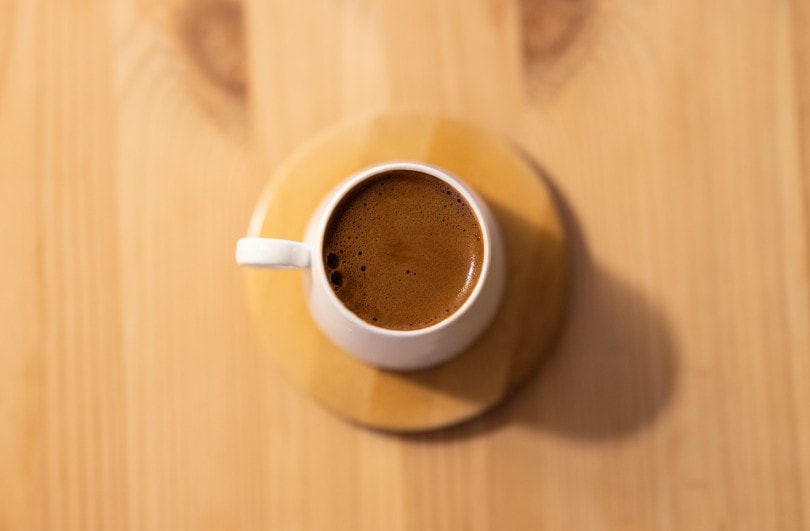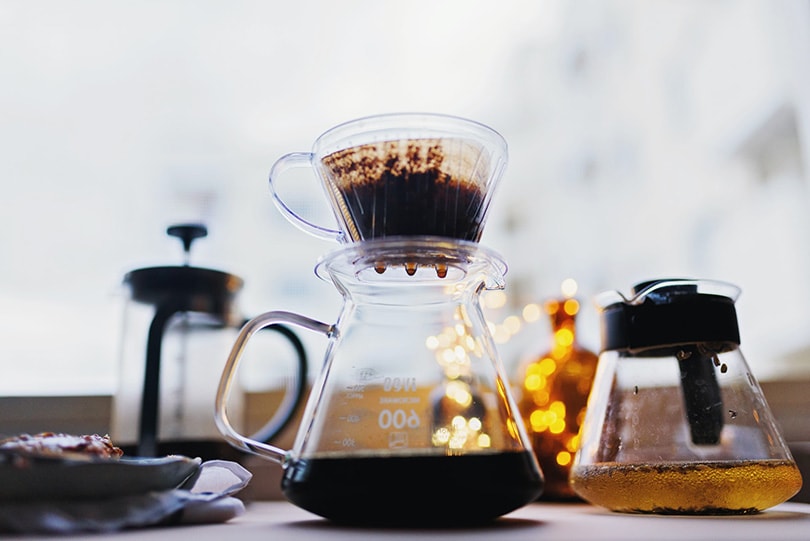
It sounds like a simple question, right? After all, ounces and cups are clear, well-defined measurements, and what you are measuring should not change them. However, for some reason, it has become commonplace to use a different definition of a cup when referring to a cup of coffee than you would otherwise use. We agree; it doesn’t make much sense.
Eight ounces per cup is the standard conversion, but a cup of coffee is only 4 ounces. To make things even worse, brewing coffee takes slightly more water by volume than the amount of coffee you end up with, meaning brewing a 4-ounce cup of coffee takes about 5 ounces of water. In this short guide, we’re going to explain the history and details of coffee “cups” so you know how much coffee and water to use to fill your mug. Let’s begin.

When Is a Cup Not a Cup? Ounces in a Coffee Cup
In the United States, the standard 8-ounce cup everyone uses for cooking and baking is technically called a customary cup. There is no funny business surrounding customary cups, and they’re simply 8 ounces of some fluid. Technically, the correct unit is customary fluid ounces rather than plain ounces, but we’ll get to that.
You’ll notice the first sign of trouble if you try to corroborate the size of a bottle of something by measuring it yourself. For labeling purposes, 1 cup is equal to 240 milliliters, slightly larger than the 236.6 milliliters size of a customary cup. This means that if you pour some fluid from a bottle labeled to contain 1 cup, your measuring cup will actually only fill to slightly below the 1-cup line. The official name for this slightly larger cup is a “legal” cup since it is the legal definition of a cup recognized in the United States.
To make matters worse, 1 legal cup is also defined as eight US nutritional fluid ounces, which are not the same as US customary fluid ounces. Things are getting out of hand so let’s summarize:
- 1 customary cup = 8 customary fluid ounces
- 1 legal cup = 8 nutritional fluid ounces = 8.12 customary fluid ounces
All you need to know is that your measuring cup measures things in customary fluid ounces and customary cups. If you’re confused by a container that seems to have less fluid in it than you expected, it could be because it was labeled in nutritional fluid ounces and legal cups.
One final note is that other countries have different conventions. In Australia, Canada, and New Zealand, 1 cup refers to one “metric” cup or 250 milliliters of fluid. You probably won’t run into metric cups if you live in the United States, but it’s good to know about just in case.

Cups of Coffee
Now that we know all about different types of cups, coffee cups throw us another curveball. One cup of brewed coffee is generally accepted to be 4 ounces, half the amount of a customary cup. However, when you’re brewing coffee, you need to use about 5 ounces of water per 4-ounce cup of coffee you want. Coffee grounds absorb some water as they brew, leading to less coffee by volume than the amount of water you put in.
Many automatic drip coffee makers have two sets of lines on the carafe, one for measuring water and the other for measuring brewed coffee. As an example, consider a 12-cup coffee maker. The carafe will typically have markings at 4, 6, 8, 10, and 12 corresponding to 20, 30, 40, 50, and 60 ounces of water. Remember that brewing with 20 ounces of water will net you about 16 ounces of brewed coffee.
Let’s work through a concrete example to make sure everything is crystal clear. Let’s say you want to wind up with two 8-ounce mugs of coffee. To brew 16 ounces of coffee, you need to use 20 ounces of water, meaning you need to fill your carafe up to the 4th line.

A Bit of History
If you think this is unnecessarily complicated, we agree. The blame seems to be traced back to the early 1970s when Mr. Coffee introduced a coffee maker that used 5 ounces of water as the standard measurement. Their carafe had markings in both 5-ounce increments and 4-ounce increments to make it easy to compare pre-brewed water amounts with brewed coffee.
Mr. Coffee’s success with this model led to copycats and the convention, unfortunately, stuck. Today it’s an archaic set of measurements, but it seems like we’re stuck with it.

Conclusion
What appears to be a simple question has a surprisingly convoluted—and annoying—answer. Not only do kitchen measuring cups and store packaging use the unit “cups” to mean different things, but coffee cups don’t use either and instead opt for a third meaning of “cups.”
Hopefully, this brief article has helped clear up some confusion surrounding cups and made it clear what people mean when they talk about cups of coffee. The best advice we can give is to follow the instructions on your coffee maker and don’t worry about converting from coffee cups to customary cups or legal cups. Most of the time, using the lines on your carafe will be the best way to get consistent results.
Featured Image Credit: PactoVisual, Pixabay















